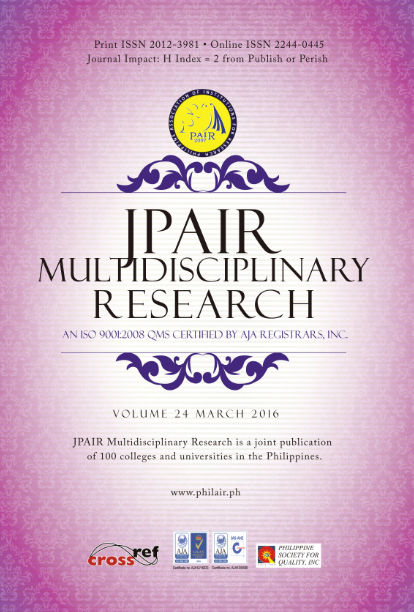Kinesthetic Learning Style and Structured Approach to Learning as Most Preferred by Nursing Students
DOI:
https://doi.org/10.7719/jpair.v24i1.378Keywords:
Social Science, learning styles, attitude towards learning, quantitative research, Marawi City, PhilippinesAbstract
The learning process has been the focus of numerous studies, but remains complex and affected by many factors. Since hardly any attention has been paid to how students learn and how teachers teach in many institutions, this quantitative descriptive-correlational study was conducted to determine the learning styles and attitude towards learning of nursing students. A sample of 304 nursing students was selected from all the nursing schools in Marawi City, Philippines using stratified proportionate random sampling technique with replacement. Results revealed that the four learning styles (Visual, Auditory, Tactile, and Kinesthetic) were found to have been used by the students simultaneously as major learning styles and most of them expressing a preference for kinesthetic learning style (78%). On the other hand, they expressed a minor and negligible preference for group Learning. The results of the questionnaire on the attitude towards learning revealed a high level of academic comfort and a preference towards structured, spontaneous, and person-centered approaches to learning. The study concludes that out of the six learning styles tested; only group learning style is found to have no significant relationship with the participants’ attitude towards learning. Based on the findings, the researcher recommends that faculty members should take into consideration the differences among the students when designing the course material.
Downloads
References
Adesoji, F. A. (2008). Managing students’ attitude towards science through problem–solving instructional strategy. Anthropologist, 10(1), 21-24.
Downloads
Published
Issue
Section
License
Copyright (c) 2016 Ashley Ali-Bangcola

This work is licensed under a Creative Commons Attribution-NonCommercial 4.0 International License.
Open Access. This article published by JPAIR Multidisciplinary Research is licensed under a Creative Commons Attribution-Noncommercial 4.0 International (CC BY-NC 4.0). You are free to share (copy and redistribute the material in any medium or format) and adapt (remix, transform, and build upon the material). Under the following terms, you must give appropriate credit, provide a link to the license, and indicate if changes were made. You may do so in any reasonable manner, but not in any way that suggests the licensor endorses you or your use. You may not use the material for commercial purposes.




















